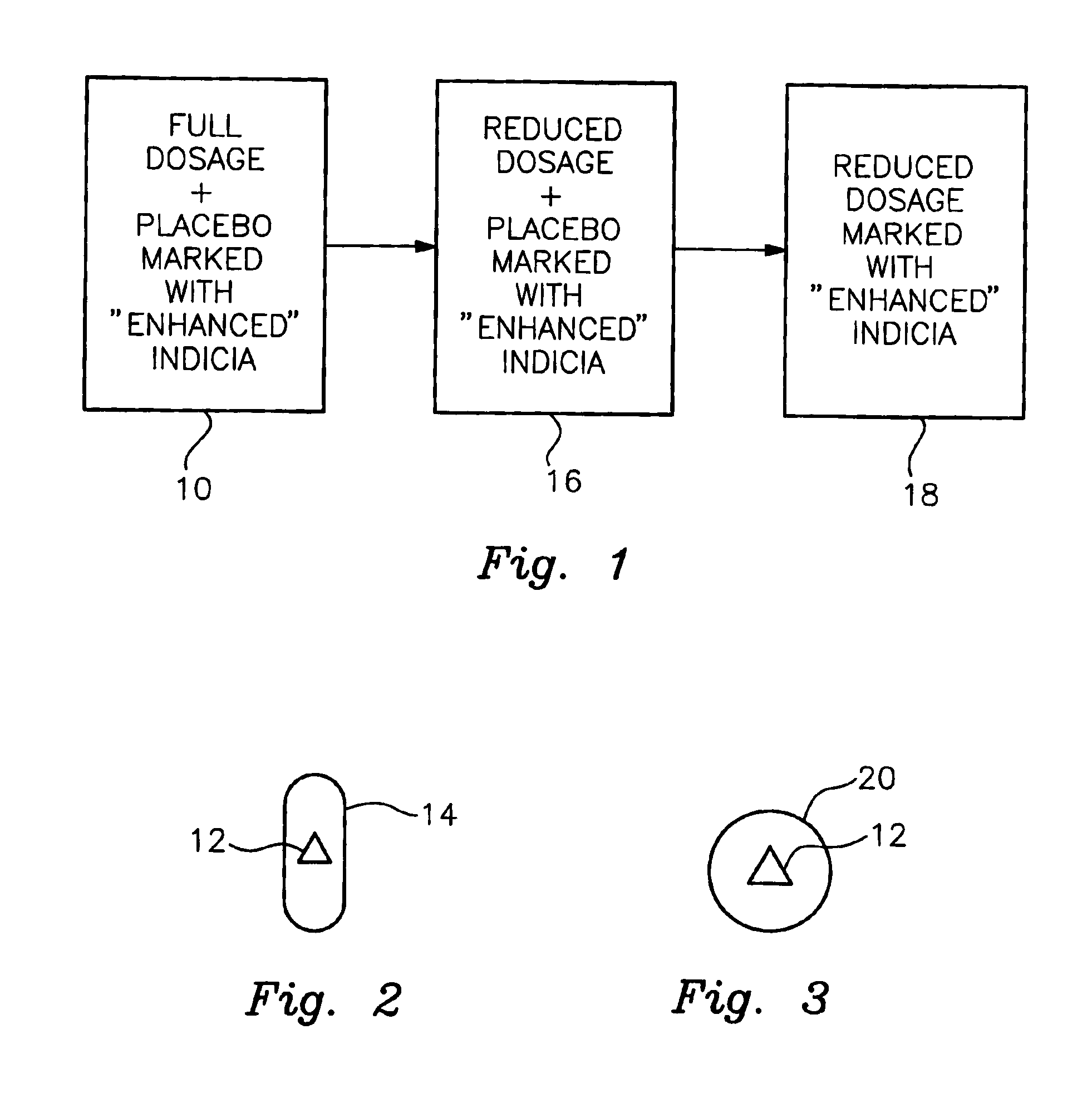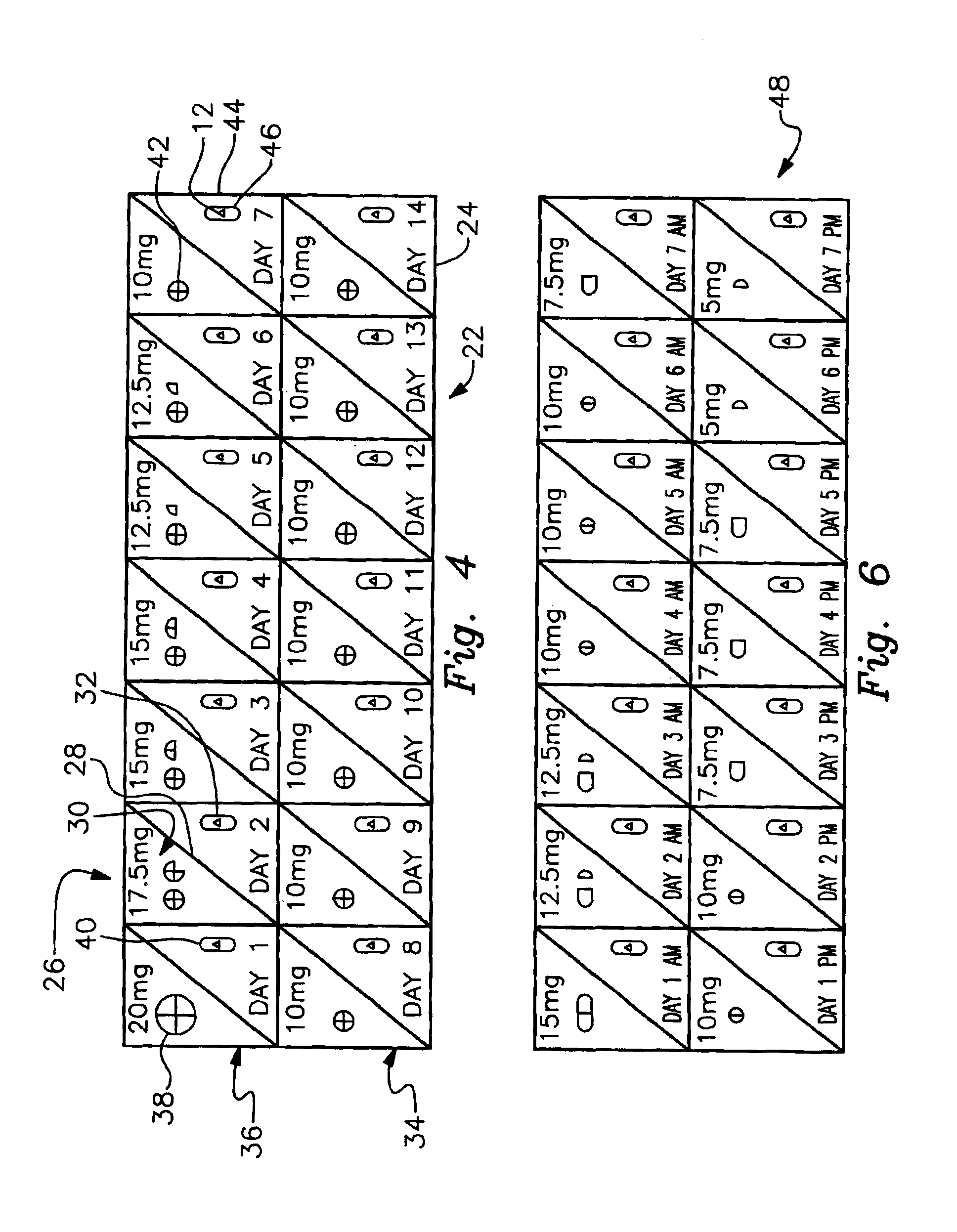Therapeutic placebo enhancement of commonly-used medications
- Summary
- Abstract
- Description
- Claims
- Application Information
AI Technical Summary
Benefits of technology
Problems solved by technology
Method used
Image
Examples
Embodiment Construction
In accordance with the preferred embodiments of the invention, there is provided a method and associated kit for reducing the normal dosage of a pharmaceutical given to a patient for the treatment of a disorder without substantially reducing the effectiveness of the treatment. While the specific research activity with respect to this invention, as discussed below, has been directed to ADHD, it is believed that this invention is applicable to many other disorders. For example, it is believed that the invention is applicable to other common medical conditions, including, but not limited to, peptic ulcers, irritable bowel, hypertension, low back pain, arthritis, anxiety disorders and depression.
In addition, while the only two pharmaceuticals used in connection with the specific research activities with respect to ADHD were methylphenidate and dextroamphetamine, it is believed other pharmaceuticals, specifically central nervous system stimulants, may be used. Of course, other pharmaceut...
PUM
| Property | Measurement | Unit |
|---|---|---|
| Time | aaaaa | aaaaa |
| Therapeutic | aaaaa | aaaaa |
| Disorder | aaaaa | aaaaa |
Abstract
Description
Claims
Application Information
 Login to View More
Login to View More - R&D
- Intellectual Property
- Life Sciences
- Materials
- Tech Scout
- Unparalleled Data Quality
- Higher Quality Content
- 60% Fewer Hallucinations
Browse by: Latest US Patents, China's latest patents, Technical Efficacy Thesaurus, Application Domain, Technology Topic, Popular Technical Reports.
© 2025 PatSnap. All rights reserved.Legal|Privacy policy|Modern Slavery Act Transparency Statement|Sitemap|About US| Contact US: help@patsnap.com



